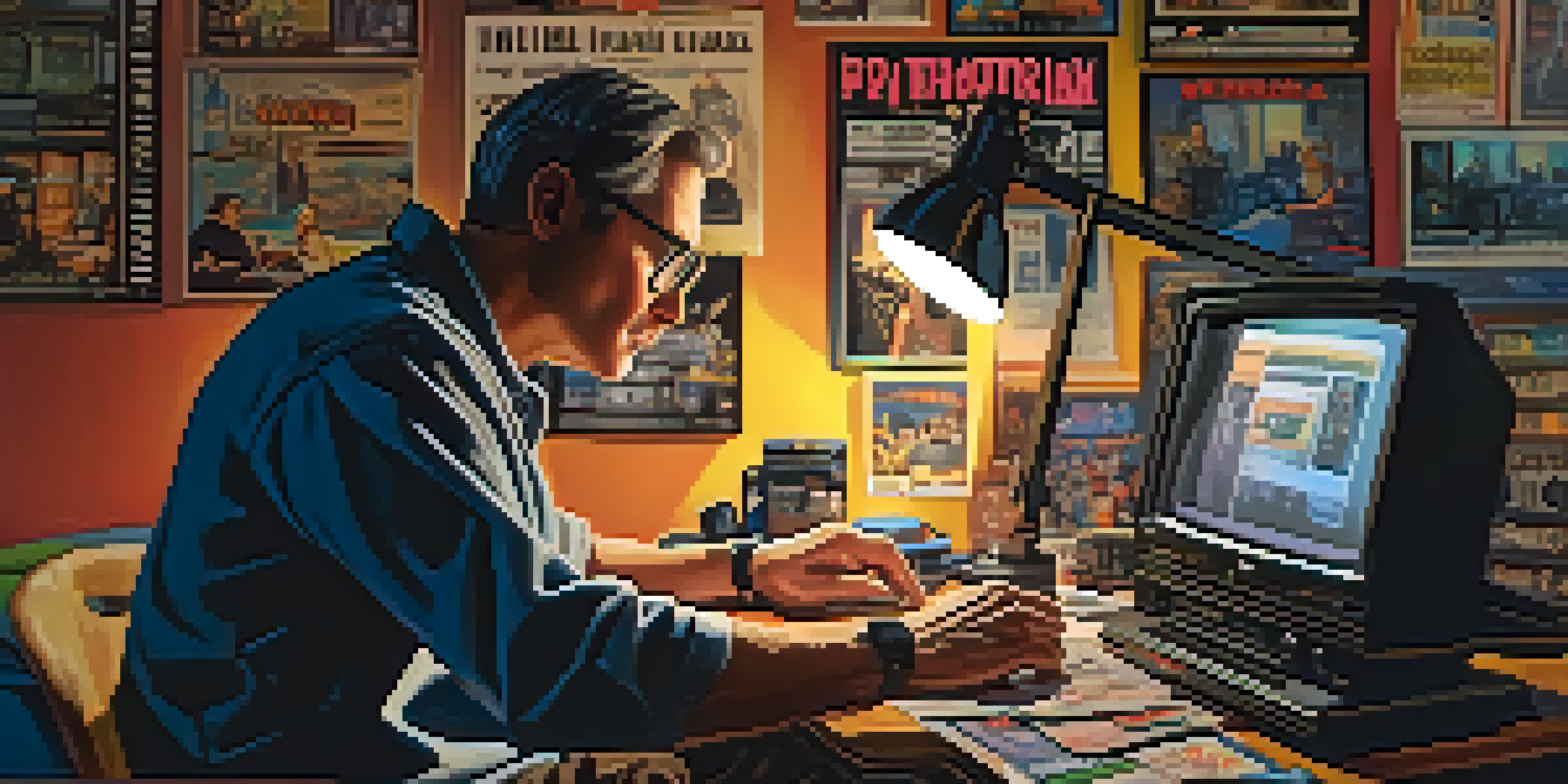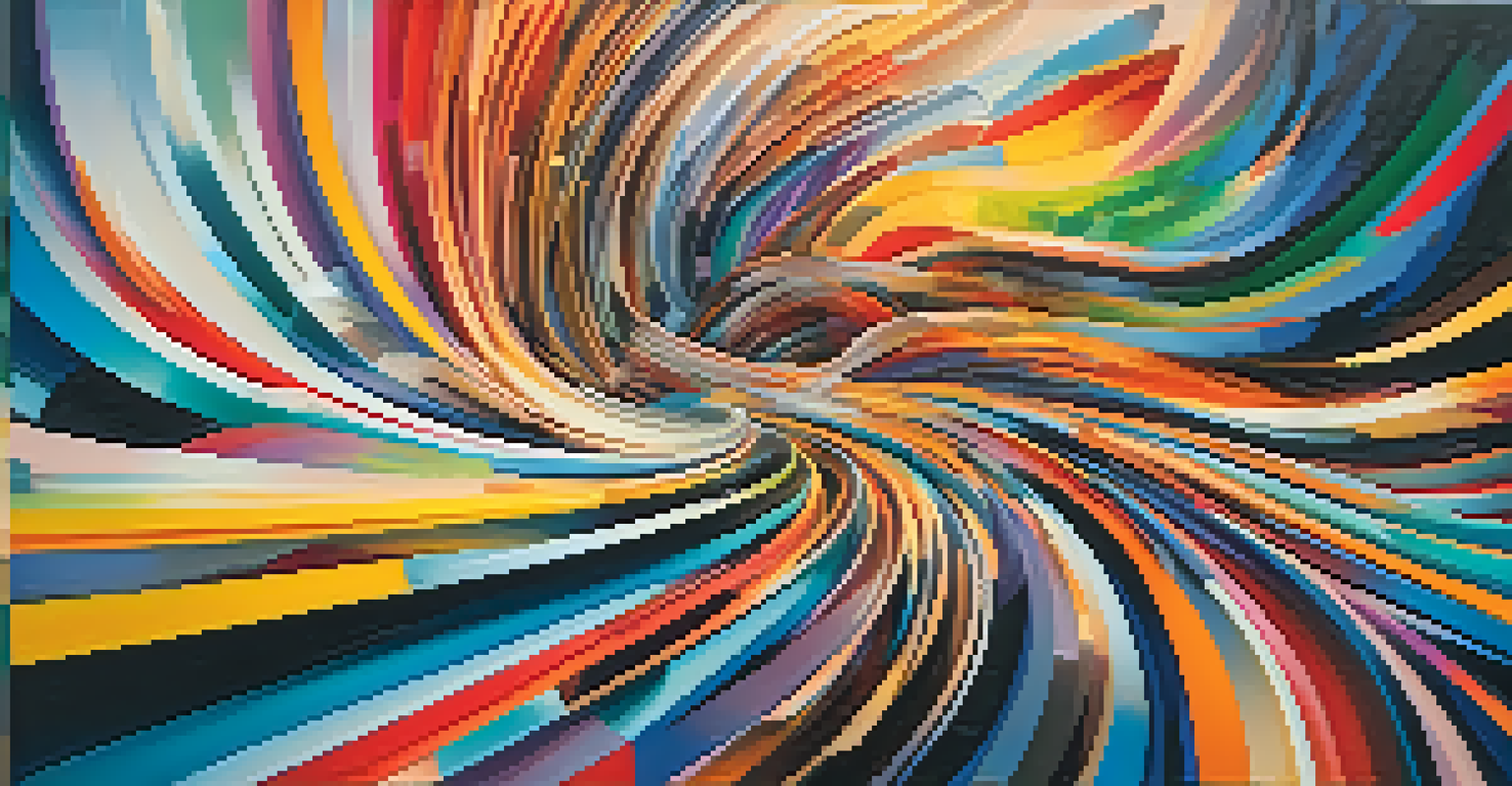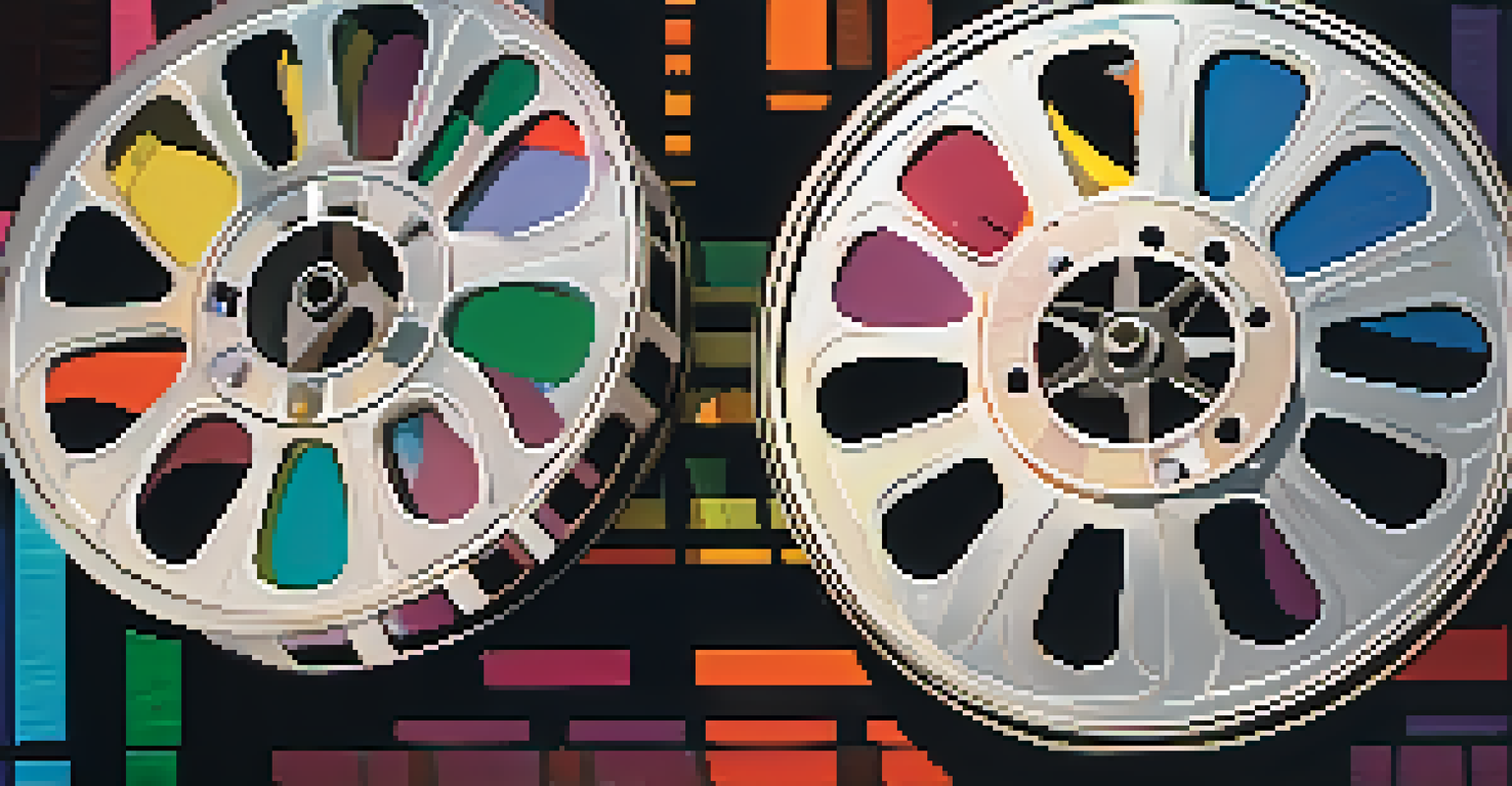The Influence of Editing Styles on Audience Perception in Film

Understanding Editing Styles: A Brief Overview
Editing styles in film refer to the techniques and methods used to piece together shots and scenes. These styles can range from fast-paced cuts to slow, deliberate transitions, each serving a unique purpose in storytelling. By understanding these different approaches, filmmakers can evoke specific emotional responses from audiences, making editing an essential part of the filmmaking process.
Editing is the process of selecting and preparing written, photographic, visual, audible, and film media used to convey information.
For example, a montage often uses rapid cuts to convey the passage of time, creating a sense of urgency or excitement. In contrast, a long take may draw viewers into a moment, allowing them to fully absorb the atmosphere and emotions on screen. This interplay between editing techniques and audience perception is what makes film editing an art form in its own right.
Ultimately, the choice of editing style can significantly influence how a story is perceived, shaping everything from tension to character development. Knowing this, filmmakers carefully consider their editing choices to guide the audience's emotional journey.
The Role of Rhythm and Pacing in Film Editing
Rhythm and pacing are crucial components of any film’s editing style, as they dictate the flow of the narrative. A well-paced edit can build suspense, while a mismatched rhythm may confuse or disengage the viewer. In action movies, for instance, rapid cuts are often employed to amplify the adrenaline rush, keeping the audience on the edge of their seats.

Conversely, slower pacing can create a reflective atmosphere, encouraging viewers to contemplate the deeper themes of a film. A poignant drama may linger on a character’s expression, allowing the audience to connect emotionally with their struggles. This balance between fast and slow editing is essential for maintaining engagement throughout the film.
Editing Styles Shape Audience Emotion
The choice of editing styles significantly influences how viewers emotionally connect with a film's narrative.
Moreover, the rhythm can also influence how information is presented, guiding viewers to focus on key elements of the story. By manipulating pacing, filmmakers can evoke various emotional responses, ultimately shaping how the audience perceives and interprets the narrative.
Jump Cuts: Breaking Traditional Editing Norms
Jump cuts are a distinctive editing technique that can significantly alter audience perception. By abruptly cutting from one shot to another, jump cuts can create a sense of disorientation or urgency, often used to convey the chaotic nature of a scene. This style breaks the conventional flow of time and space, making viewers more aware of the editing itself.
In film, editing is the process of taking footage and putting it together to create a finished product that tells a story.
A prime example of this is found in films like 'Breathless' by Jean-Luc Godard, where jump cuts effectively convey the frenetic energy of the characters' lives. This technique invites the audience to question the narrative's realism, allowing them to engage with the film on a different level. Such unconventional editing choices can challenge viewers' expectations and encourage them to think critically about the content.
However, while jump cuts can be effective, they also require a careful balance to avoid alienating the audience. When used thoughtfully, this style can enhance the storytelling experience and provoke deeper reflection on the film's themes.
Montage: A Tool for Emotional Resonance
Montage is an editing technique that compresses time and space, allowing filmmakers to convey complex narratives efficiently. By juxtaposing various images, a montage can evoke strong emotions and highlight themes without lengthy exposition. This approach has been famously utilized in films like 'Rocky,' where training montages inspire viewers and build anticipation for the protagonist's journey.
The emotional resonance of a montage lies in its ability to connect disparate moments, effectively telling a story through visuals alone. By linking images that may seem unrelated, filmmakers can create a powerful emotional impact, drawing the audience into the character's experience. This technique not only saves time but also enriches the narrative by allowing viewers to feel the passage of time.
Rhythm and Pacing Engage Viewers
Effective rhythm and pacing in film editing are crucial for maintaining audience engagement and conveying the story's intended emotional impact.
Moreover, montages can also serve as a stylistic choice, reflecting the film's overall tone. Whether it's a whimsical series of clips or a dramatic succession of events, montages can significantly influence how audiences perceive the unfolding narrative.
The Impact of Color Grading and Effects on Perception
Color grading and visual effects are integral to film editing, as they can dramatically influence audience perception. The use of specific color palettes can evoke certain emotions or set the tone for a film. For instance, a desaturated color scheme may create a somber atmosphere, while vibrant colors can instill a sense of joy or excitement.
Moreover, visual effects can enhance storytelling by adding layers of meaning to a scene. For example, a dramatic explosion might be complemented by a slow-motion effect, heightening the emotional stakes and drawing viewers into the action. This interplay between editing and visual elements underscores the importance of cohesive storytelling.
Ultimately, the combination of color grading and effects can shape how audiences interpret a film's themes and characters. By manipulating these elements, filmmakers can craft a unique viewing experience that resonates on multiple levels, leaving a lasting impression.
The Influence of Editing Styles on Character Development
Editing styles play a pivotal role in character development, influencing how audiences perceive and connect with characters. For example, a character's internal struggle may be highlighted through close-ups and rapid cuts, evoking a sense of urgency and tension. This technique allows viewers to empathize with the character's experience and understand their motivations more deeply.
Conversely, longer takes may help establish a character's presence and authority in a scene. By allowing the moment to breathe, filmmakers can give audiences the space to absorb the character's emotions and actions. This thoughtful use of editing can enhance the narrative's depth and complexity, fostering a stronger connection between the audience and the characters.
Montage Evokes Strong Emotional Responses
Montage editing allows filmmakers to convey complex narratives and evoke powerful emotions by juxtaposing various images.
Moreover, the editing style can also influence how characters are perceived in relation to one another. By juxtaposing their actions or reactions, filmmakers can create a dynamic interplay that reveals underlying tensions or alliances, enriching the overall storytelling experience.
Conclusion: The Lasting Effects of Editing on Viewers
In conclusion, the influence of editing styles on audience perception in film cannot be overstated. From pacing and rhythm to montage and color grading, each editing choice shapes how a story is told and experienced. Filmmakers wield this power carefully, crafting narratives that resonate with viewers on an emotional level.
As audiences, we may not always be conscious of these editing techniques, but they significantly impact our enjoyment and understanding of a film. The magic of cinema lies not just in the story but in the art of editing that brings it to life. By appreciating the nuances of editing, we can gain a deeper understanding of the films we love.

Ultimately, editing is an essential component of filmmaking that enriches the viewer experience. As we continue to explore the world of cinema, let’s remain mindful of how these editing styles shape our perceptions and emotions, adding layers of meaning to the stories we cherish.